A vertical garden is an excellent way to save space and grow various plants in a small space. Building a vertical garden using PVC pipes is an easy and cost-effective way to create your vertical garden at home. PVC pipes are inexpensive and readily available at hardware stores. They can be cut and drilled to create a customized garden structure.
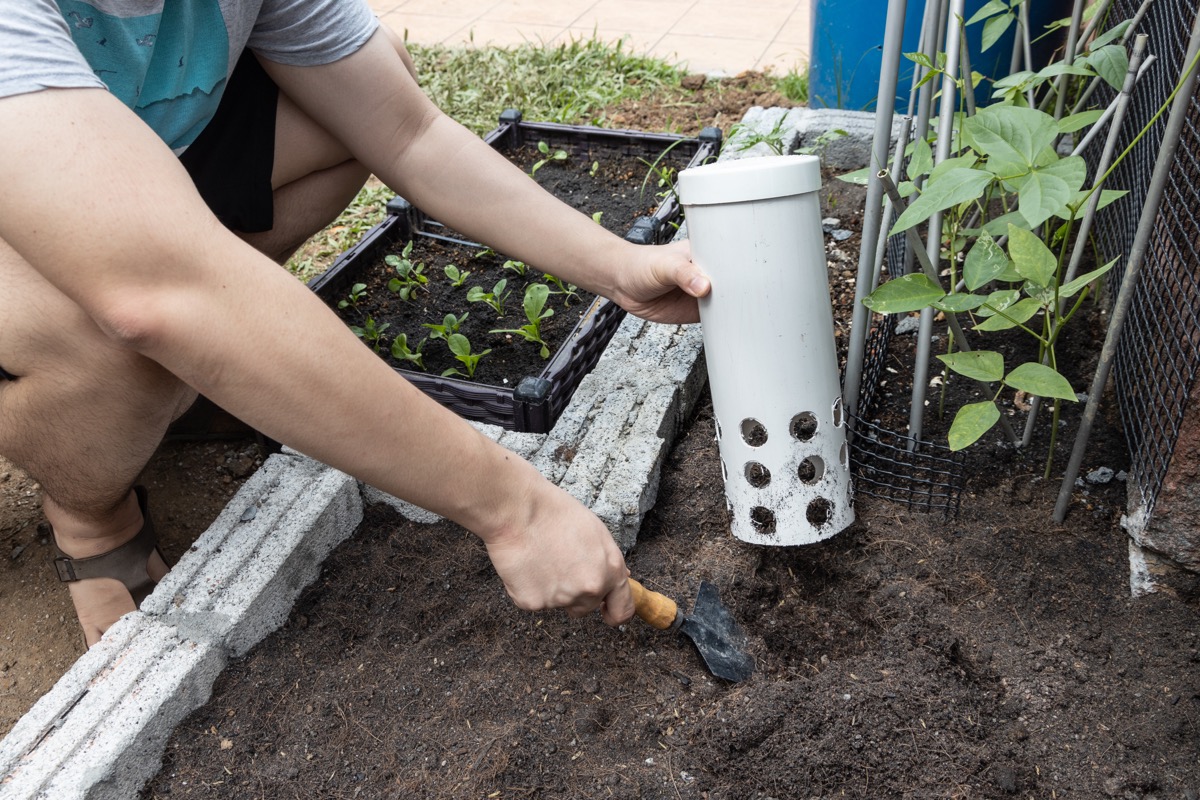
This guide will you through creating a vertical garden out of PVC pipes, including tips and techniques for creating a stable and durable structure and maintaining your garden. We’ll also provide some cheap DIY-making ideas to help you save money while creating a beautiful and functional vertical garden.
Before you begin, gather all the materials you’ll need, including PVC pipes, potting mix, compost, plants, pebbles, a PVC pipe cutter or saw, a drill with a hole saw attachment, PVC pipe connectors, screws and anchors, and a stand or wall to mount the garden on. With these materials, you’ll be able to create a stunning and productive vertical garden that will bring life and beauty to any small space.
How to build a vertical garden with PVC pipes
Materials required to build a vertical garden with PVC pipes
- PVC pipes (100mm-150mm diameter, any length)
- Potting mix and compost
- Plants (suitable for vertical gardening, such as leafy greens, radishes, and small tomatoes)
- Large pebbles or rocks (for added support and stability)
- PVC pipe cutter or saw
- Drill with a hole saw attachment (if you want to drill drainage holes)
- PVC pipe connectors (if you want to create a larger and more complex structure)
- Screws and anchors (if you plan to mount the vertical garden on a wall)
- A stand or wall to mount the vertical garden on (if you don’t have one, you can use a wooden pallet or a metal frame)
- Drip irrigation pipeline (or you can water from the top)
In case you missed it: How to Start Indoor Vertical Garden with Stunning Spider Plants
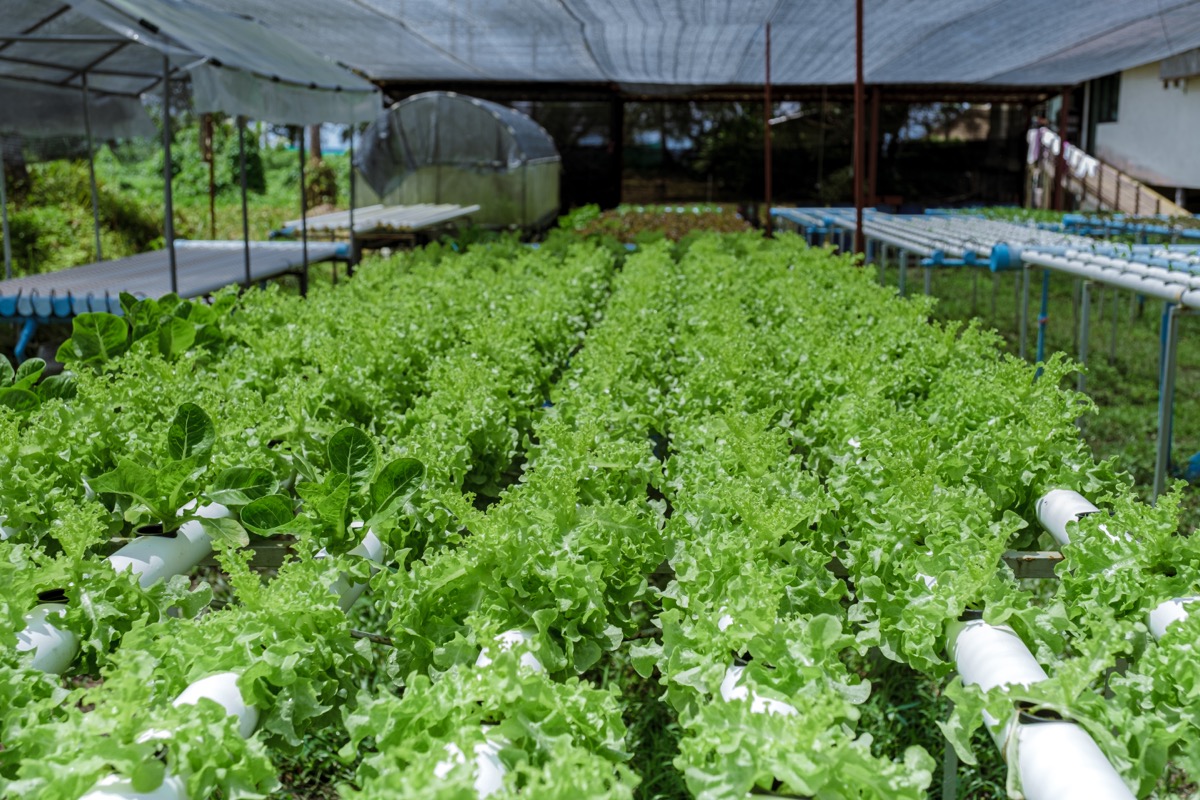
Note: These basic materials are required to build a vertical garden using PVC pipes. The same materials may vary depending on the design and size of your vertical garden and the plants you choose to grow.
Tools required to build a vertical garden with PVC pipes
- A drill and circular drill bit OR a jigsaw
- A hacksaw (if the pipe needs to be cut down to size)
- A marker pen (to mark where to cut or drill on the pipe)
- Measuring tape or ruler (to measure the length of pipe needed)
- A level (to ensure the garden is hung straight)
- Screwdriver (to attach connectors, anchors, and brackets
- A hammer (to insert the anchors)
These tools will help you cut, drill, and assemble the PVC pipes and mount the garden securely on a wall or stand. The right tools will make building your vertical garden easier, faster, and more precise.
Site preparation and raised bed
When building a vertical garden with PVC pipes, the first step is to prepare the site and create a raised bed. This involves selecting a suitable location in your garden that receives ample sunlight, has well-draining soil, and is close to a water source. To create the raised bed, you will need to measure and mark out the area where the bed will be located. It is important to use a level to ensure that the bed is even and stable.
Once the bed is marked out, you must dig out the soil to a depth of at least 12 inches. This will create a raised area that will be easy to access and maintain. You will then need to line the bed with a weed barrier or landscape fabric to prevent weeds from growing through the soil. Next, add a layer of compost or well-rotted manure to the bed to improve the soil quality.
In case you missed it: Vertical Gardening For Beginners – How To Start, Tips
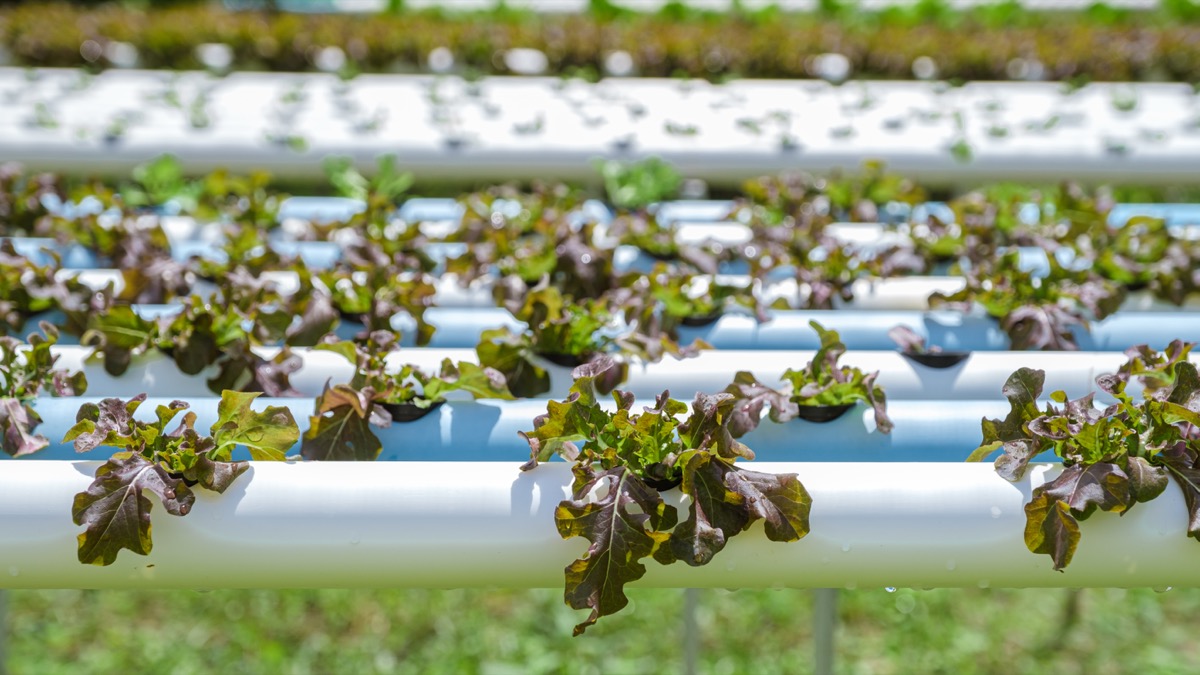
Finally, backfill the bed with a mix of topsoil, compost, and well-rotted manure, and level the surface. The bed is now ready for planting. It’s recommended to Use a mallet and make the top of the pipe flush with the top of the garden boards. And use the plumber’s brackets to stabilize the pipe to the inside of the boards. This will ensure that the trellis is stable and will not fall over. It is important to note that the raised bed should be at least 4 feet wide to provide enough space for the PVC pipe trellis and plants.
Tips and techniques for site preparation and raised bed
Before building a vertical garden with PVC pipes, it is important to prepare the site and create a raised bed. This will ensure that the garden has proper drainage and that the plants have enough space to grow. The first step in site preparation is to choose a location for the garden. This spot should get plenty of sunlight, as plants need 6 hours of direct sunlight per day. It should also be a location that is easy to access and maintain.
Next, it is important to clear the site of any debris or rocks. This will make it easier to work with and ensure that the raised bed is level. Once the site is prepared, you can start building the raised bed. This can be done using various materials, such as wood, cinder blocks, or bricks. The most important thing is that the bed is level and has proper drainage. You can add drainage holes in the bottom of the bed or use a layer of gravel to ensure that water can flow away from the plants.
It is also important to consider the height of the raised bed. A raised bed at least 12 inches tall will make it easier to plant and maintain the garden. Once the raised bed is built, you can add soil. Using a mix of topsoil, compost, and peat moss is recommended. These materials will provide the plants with the nutrients they need to grow. When the site and raised bed are prepared, you can install the PVC pipe trellis for your vertical garden.
Installing the PVC pipe trellis
Installing a trellis using PVC pipes is a relatively simple and cost-effective way to create a vertical garden. The first step is cutting the PVC pipes to the appropriate length. In this case, the pipes need to be 12 inches long and spaced 4 feet apart along the long side of the garden. A hacksaw can be used to make these cuts. Next, dig holes for each pipe section along the boards of an existing raised bed garden.
Use a mallet to ensure that the top of the pipe is flush with the top of the boards. The plumber’s brackets can then stabilize the pipes to the inside of the boards. Once the pipes are in place, insert a 2-foot-long rebar inside each pipe and force it into the ground a few inches. This will help to stabilize the trellis. Alternatively, wooden tomato stakes can also be used.
In case you missed it: Vertical Gardening Frequently Asked Questions (FAQs)
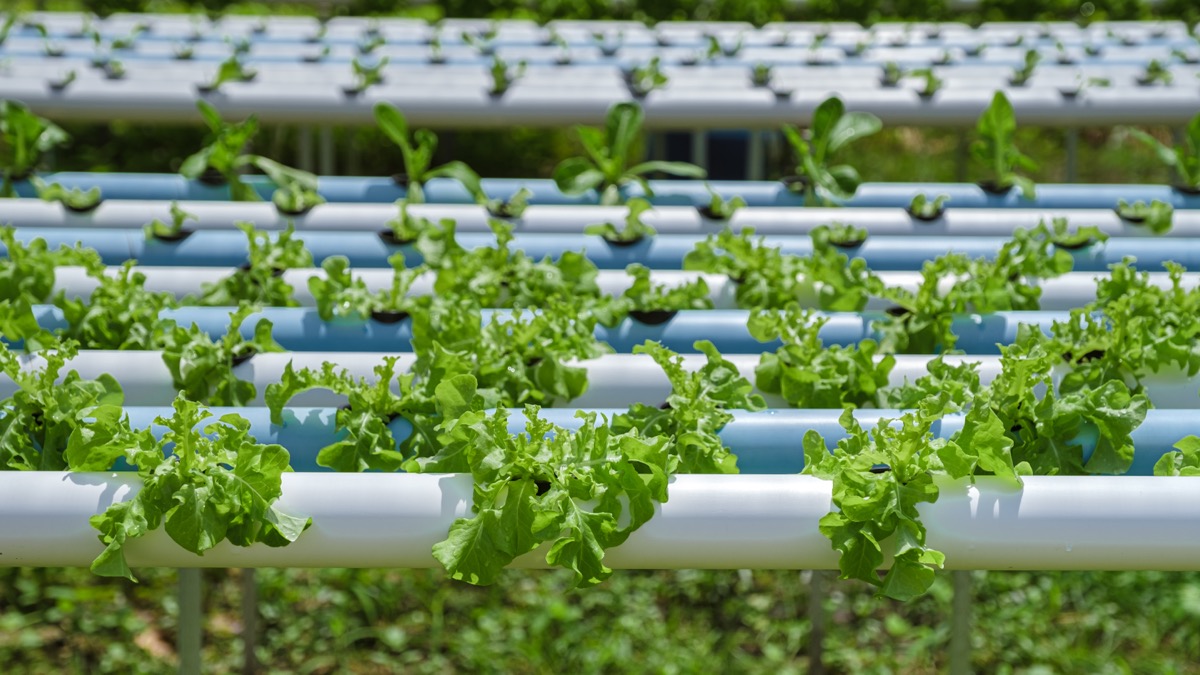
To finish the trellis
- Cut more PVC pipes 6 to 7 feet long and fit them over the rebar.
- Connect the pipes to the dug-in poles using a connector so that they are vertical along the edge of the bed.
- Cut 4-foot lengths of PVC pipe and affix a one-way elbow to each end pipe and two-way elbows to the top of the other vertical pipes.
- Connect the 4-foot lengths to make the horizontal part of the vertical garden.
Adding the nylon netting
- Measure and cut the netting to fit each trellis section, leaving a few inches at the top to drape over the piping.
- Secure the netting to the piping using staples or twist ties.
- To add extra strength, secure the netting to the side poles.
- Leave a few inches of netting at the bottom to secure into the ground with anchor pins.
- As the plants grow, weave them through the holes in the netting to support their growth.
Caring for and maintaining the vertical garden
- Regularly check the netting for any tears or holes, and repair or replace it as necessary.
- Make sure to give plants enough water and nutrients and prune as needed.
- Keep an eye on pests or diseases, and take appropriate action to address them.
- As plants grow and mature, ensure that the trellis and netting properly support them to prevent breakage or damage
- Regularly inspect the PVC pipes and brackets to ensure they are secure and stable, and make necessary repairs or adjustments.
- Consider using a drip irrigation system to make watering more efficient.
- Keep an eye on the weather and take steps to protect the plants from strong winds or heavy rains.
Tips and techniques
When building a vertical garden with PVC pipes, the first step is to prepare the site and create a raised bed. This will be the foundation for the trellis that will hold your plants in place. To start, choose a sunny garden spot with well-draining soil, clear debris or weeds from the area, and level the ground as needed. Next, build a raised bed using boards or other materials. The bed size will depend on the available space and the number of plants you plan to grow.
Once the raised bed is in place, it’s essential to ensure it’s level and stable. Use a level to check the horizontal and vertical alignment and adjust as needed. To further enhance the bed’s stability, you can secure it to the ground using stakes or other anchors. This will prevent it from shifting or tipping over, especially in windy conditions. These simple tips and techniques can create a beautiful and functional PVC pipe vertical garden in your backyard.
In case you missed it: Vertical Gardening – For Balcony, Home, Cost In India
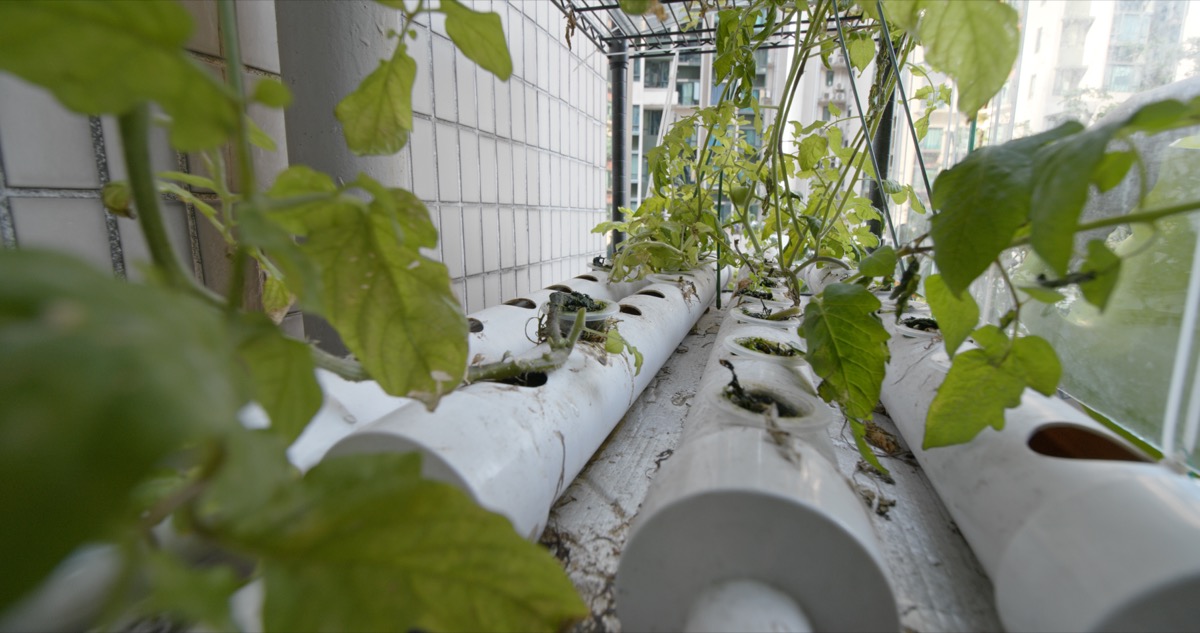
What can you grow in the vertical garden?
One of the most popular plants for a vertical garden is foliage plants, such as ferns, ivy, and creeping fig. plants are easy to care for and can create a lush and natural look for your vertical garden. Herbs such as basil, thyme, and mint are also great options, as they can be quickly grown in small spaces and used in cooking. Edible plants, such as tomatoes, peppers, and strawberries, are also popular choices for a vertical garden.
Not only do they add a beautiful touch to your vertical garden, but they also provide fresh and delicious produce for your kitchen. Cucumbers, peas, and beans are other popular edible plants for a vertical garden. Flowering plants, such as petunias, geraniums, and impatiens, are also great options for a vertical garden. They can add color and beauty to your vertical garden and can also attract beneficial insects to your garden.
How do you build a successful vertical garden?
- Choose the right location: A vertical garden should be in an area with 6 hours of sunlight daily and good drainage.
- Select the right plants: Choose plants that are well-suited to vertical gardening, such as creepers, climbing plants, and trailing plants.
- Plan the layout: Decide on the size, shape, and placement of your vertical garden, and create a layout that works for your space and the plants you’ve chosen.
- Choose the suitable materials: Opt for durable, weather-resistant materials that withstand the elements, such as PVC pipes, nylon netting, and rebar.
- Prepare the site: Clear the area and level the ground before building your vertical garden. If you’re using a raised bed, make sure it’s sturdy and well-draining.
- Install the trellis: Use PVC pipes and connectors to create a sturdy trellis that can support the weight of your plants.
- Add the netting: Use nylon netting to create a plant support system. Make sure the netting is securely attached to the trellis.
- Plant your vertical garden: Carefully plant your chosen plants and train them to grow up the trellis and through the netting.
- Maintain your vertical garden: Regularly water, fertilize, and prune your plants to keep them healthy and encourage growth.
- Customize and personalize: Get creative and add your personal touch to your vertical garden using different colors, textures, and accessories.
In case you missed it: Terrace Vertical Gardening, Ideas, Tips, Techniques

Conclusion
In conclusion, building a successful vertical garden requires careful planning and preparation. This includes selecting the right location, preparing the site, and creating a raised bed suitable for the plants you plan to grow. Additionally, it’s important to choose suitable materials for your trellis, such as PVC pipes and nylon netting, and to install them correctly.
Regular maintenance and care, such as watering, fertilizing, and pruning, are crucial for ensuring that your vertical garden thrives. Right approach and attention to detail, you can create a beautiful and productive vertical garden that will add beauty and bounty to your home.
- Growing Gold: Essential Techniques for Planting Pineapples
- How to Make Kalanchoe Plant Bushy: Home Remedies and Solutions
- 11 Reasons Why Your Gardenia is Not Blooming: Home Remedies and Solutions
- Eco Elegance: The Guide to Designing a Drought-Tolerant Landscape
- Gardening on a Slope: Strategies for Hillside Landscaping
- Nourish and Flourish: Top Organic Mulches for Thriving House Plants
- Everything You Want to Know about Indian Mogra Flower: Discover Uses and Growing
- Green Thumb Success: Expert Tips for Cultivating Greenhouse Pumpkins All Year Round
- Maximize Growth & Flavor: The Ultimate Guide to Companion Planting in Herb Gardens
- How to Control Rhododendron Problems Naturally: Home Remedies and Organic Ways to Fix Them
- Natural Magic: The Remarkable Benefits of Cinnamon for Plants
- Best Steps to Revive Dying Tulip with Natural and Organic Treatment
- 10 Reasons Why Your Angel Trumpet is Not Blooming: Remedies and Treatment
- How to Fix Periwinkle Leaf and Flower-Related Problems: Natural Remedies and Solutions
- How to Fix Zinnias Leaf and Flower Problems: Discover Natural and Home Remedies
- Organic Steps to Induce Lemon Tree Flowers: A Comprehensive Guide
- Bloom Booster: Crafting the Perfect Homemade Bougainvillea Fertilizer
- Optimizing Growth: A Guide to Applying NPK Fertilizer for Potted Plants
- 10 Best Homemade Fertilizers for Rubber Plant: DIY Recipes and Application Method
- How to Boost Female Pumpkin Flowers: Effective Steps for More Flowers and High Yields
- Transform Your Indoor Garden: Top Benefits of Pink Salt for Houseplants
- 10 Best Homemade Fertilizers for Peacock Plants (Calathea): Easy DIY Guide
- Unlock Blooms: 9 Reasons Why Your Potted Chrysanthemum is Not Blooming
- 8 Reasons Why Your Potted Hibiscus is Not Blooming: Fix it with Simple Solutions
- Unlock Blooms: 9 Key Reasons Your Potted Frangipani Won’t Flower
- 10 Reasons Why Is My Ice Plant Not Blooming: Remedies and Treatment
- 10 Reasons Why My Potted Hydrangea Not Blooming: Treatment and Remedies
- 10 Reasons Why is My Wisteria Not Blooming: Remedies and Treatment
- 10 Reasons Why is My Goldfish Plant Not Blooming: Remedies and Treatment
- Maximize Your Space: Ultimate Guide to Balcony Gardening with Grow Bags
- 10 Reasons Why Your Iris is Not Blooming: Remedies and Treatment
- 10 Reasons Why Your Anthurium Plant is Not Blooming: Treatment and Remedies
- 10 Reasons Why Your Aquaponic Plants Are Not Flowering: Remedies and Treatment
- 10 Reasons Why Your Agapanthus is Not Flowering: Remedies and Treatment
- Ultimate Guide to Brown Turkey Fig: Steps to Growing Brown Turkey Figs
- How to Grow Acai Berry: Propagation, Planting, and Care